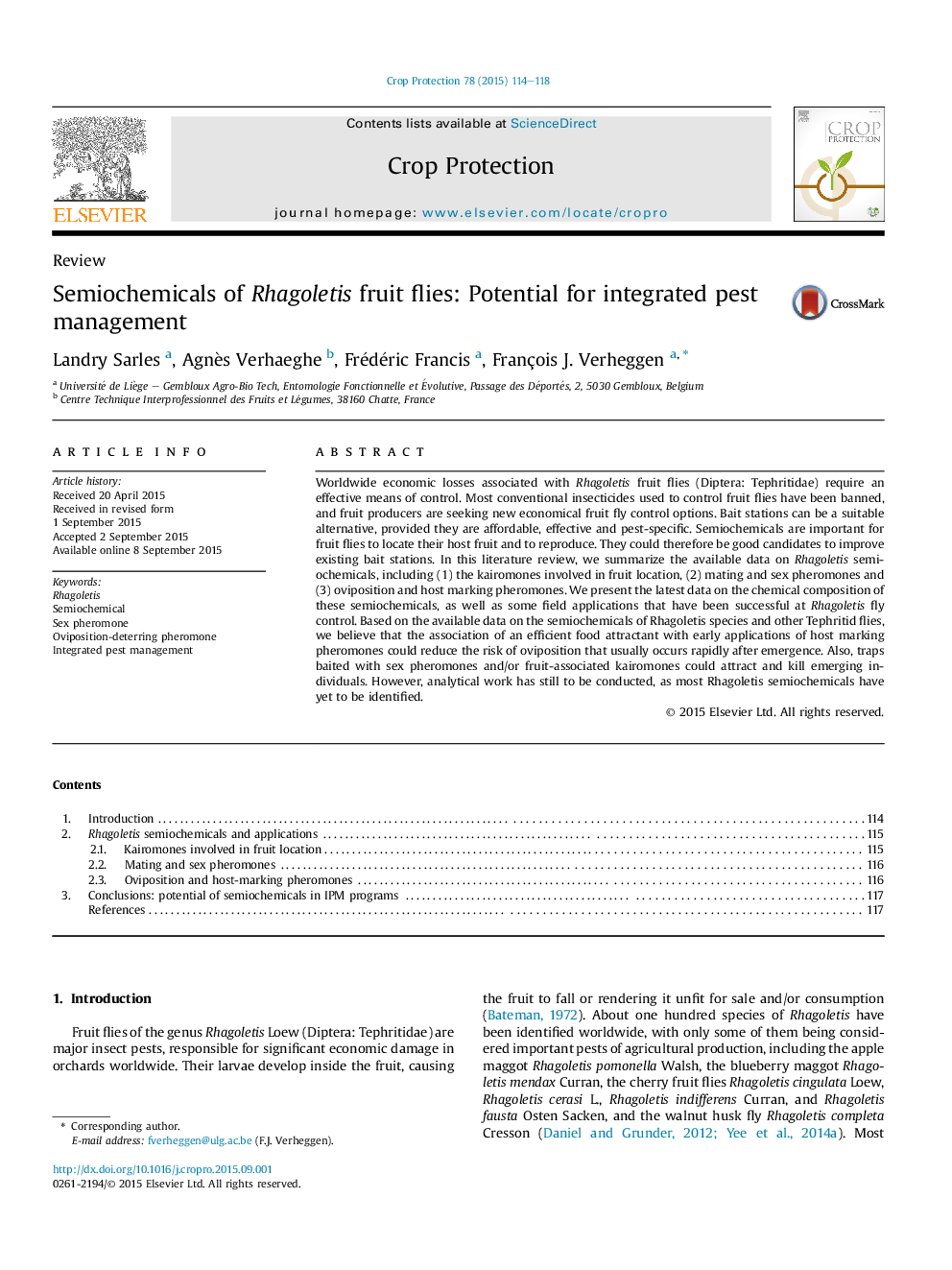| Article ID | Journal | Published Year | Pages | File Type |
|---|---|---|---|---|
| 4505676 | Crop Protection | 2015 | 5 Pages |
•Semiochemicals of Rhagoletis fruit flies have potential to improve existing bait station.•Here, we list the kairomones and pheromones identified in Rhagoletis species.•We present different field assays showing how these volatile organic chemicals can be part of IPM strategies.
Worldwide economic losses associated with Rhagoletis fruit flies (Diptera: Tephritidae) require an effective means of control. Most conventional insecticides used to control fruit flies have been banned, and fruit producers are seeking new economical fruit fly control options. Bait stations can be a suitable alternative, provided they are affordable, effective and pest-specific. Semiochemicals are important for fruit flies to locate their host fruit and to reproduce. They could therefore be good candidates to improve existing bait stations. In this literature review, we summarize the available data on Rhagoletis semiochemicals, including (1) the kairomones involved in fruit location, (2) mating and sex pheromones and (3) oviposition and host marking pheromones. We present the latest data on the chemical composition of these semiochemicals, as well as some field applications that have been successful at Rhagoletis fly control. Based on the available data on the semiochemicals of Rhagoletis species and other Tephritid flies, we believe that the association of an efficient food attractant with early applications of host marking pheromones could reduce the risk of oviposition that usually occurs rapidly after emergence. Also, traps baited with sex pheromones and/or fruit-associated kairomones could attract and kill emerging individuals. However, analytical work has still to be conducted, as most Rhagoletis semiochemicals have yet to be identified.
